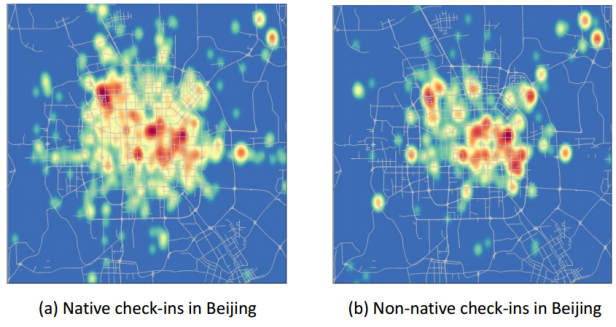TECHNOLOGY REVIEW: The increasing availability of big data from mobile phones and location-based apps has triggered a revolution in the understanding of human mobility patterns. This data shows the ebb and flow of the daily commute in and out of cities, the pattern of travel around the world and even how disease can spread through cities via their transport systems.
So there is considerable interest in looking more closely at human mobility patterns to see just how well it can be predicted and how these predictions might be used in everything from disease control and city planning to traffic forecasting and location-based advertising.
Today we get an insight into the kind of detailed that is possible thanks to the work of Zimo Yang at Microsoft research in Beijing and a few pals. These guys start with the hypothesis that people who live in a city have a pattern of mobility that is significantly different from those who are merely visiting. By dividing travelers into locals and non-locals, their ability to predict where people are likely to visit dramatically improves.
Zimo and co begin with data from a Chinese location-based social network called Jiepang.com. This is similar to Foursquare in the US. It allows users to record the places they visit and to connect with friends at these locations and to find others with similar interests.
Physics arXiv: Indigenization of Urban Mobility
Zimo Yang, Nicholas Jing Yuan, Xing Xie, Defu Lian, Yong Rui, Tao Zhou

Comments